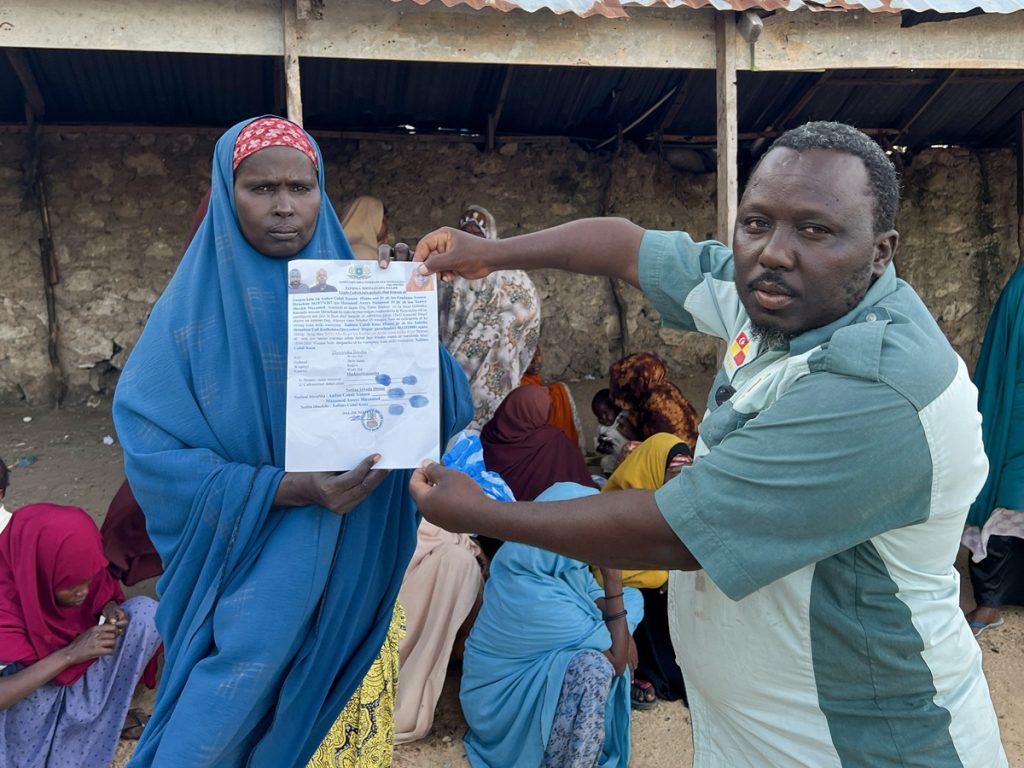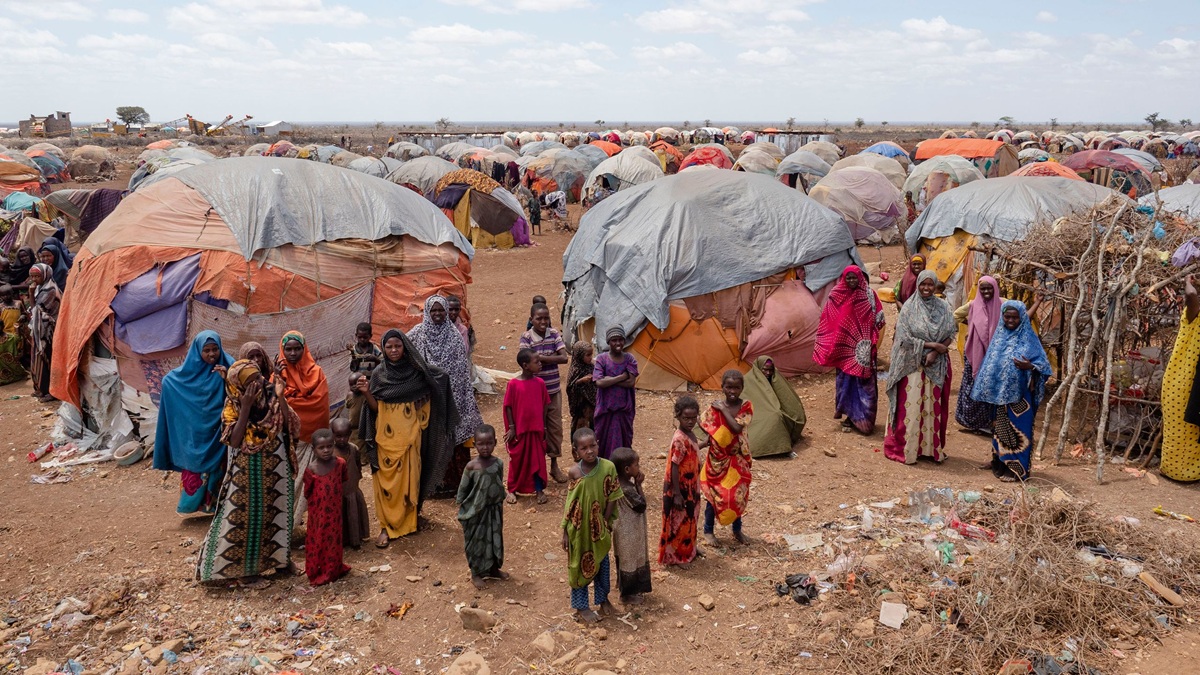Over 400 displaced families living in the Hilaac Wanaag camp for Internally Displaced Persons in Garasbaley, a district west of Mogadishu, have embarked on a quiet, yet powerful revolution.
Rather than waiting on international organisations to find a permanent solution for internally displaced peoples (IDPs) in Somalia, they are taking charge of their own lives.
“We decided that owning even a small piece of land is better than being at someone else’s mercy,” said Mohamed Aweys, a father whose 15 children and two wives live with him in the camp. He created Hilaac Wanaag camp as an informal settlement in 2018. It is not registered with the government.
The camp’s residents established a landownership scheme for themselves in 2022, financing it through a traditional communal savings practice, known as ayuuto in the Somali language.
Ayuuto is a traditional economic system practiced within Somali society. It is an informal savings scheme based on trust. Every month, each member of the programme contributes the same, small amount of money to the scheme. Each month just one participant receives the full pooled amount, allowing them to invest in something more substantial than they would be able to if they did not share their money as a group.
The scheme has enabled hundreds of internally displaced families to buy a small plot of land for residential use.

According to the International Organisation for Migration approximately four million Somalis are internally displaced, one of the highest per capita in the world.
IDPs face frequent eviction from camps where they have no rights to the land. This challenge adds to the trauma experienced from fleeing from conflict, drought, flood or other disasters.
“Every time we settle somewhere, we are forced to move,” Aweys said. “That’s why we decided to take control of our lives.”
In his former life, he was a farmer cultivating various crops on his land. After being displaced due to conflict and drought from Janaale in the south-eastern Lower Shabelle region, he lived in difficult conditions for a long time, sometimes doing manual labour jobs in Mogadishu to provide for his family.
Aweys was evicted from four different places after just a few months, largely due to a construction boom in the city which pushes the displaced further and further from the centre of town as camps are cleared to make way for new buildings.
In total, 428 families reside at Hilaac Wanaag camp and among them, so far, 103 families have managed to buy land. Aweys conceived of the land ownership initiative and sought approval and advice from other leaders in the camp.
For ayuuto, each household in the IDP camp contributes $4.50 a month into a shared fund.They get the money from different sources; some work as porters, while others beg. Each month, one family receives the total amount, which is then used to buy a legally registered plot. The land is about 10 kilometres from Mogadishu and 100 kilometres from Lower Shabelle region.
The new owners receive legally authorised documents to prove the land belongs to them. Each plot measures 12 metres by 12 metres.
The plan is to leave the IDP camp once all families have bought their plots.
To decide which family will be allocated the land each month, representatives from each family form a line and pick out folded pieces of paper from a plastic container. All but one of the pieces of paper is blank. The person who picks the only one with ‘land’ written on it receives the plot. It’s like a lottery.
Finding land to buy was a huge challenge. The sellers wanted $5,000 collateral upfront, so Aweys raised $3,000 as collateral from the farm he was forced to flee from in his homeland of Somalia’s southern Lower Shabelle region. He convinced another IDP, a close friend, to raise $2,000 from his abandoned farm in the same area.
“I couldn’t stand by while families who can’t even afford a cart to move their belongings were left behind,” said Aweys.
Most of the dwellings on the privately owned plots are made from branches bent into an igloo shape and covered with cloth and plastic sheeting, similar to those in IDP camps. However, many families have built toilets on their land, a step up from those in overcrowded camps.
Halimo Abdi Kuus, a widow with seven children, was the thirty-sixth person to receive her own plot of land. She works as a porter in Mogadishu’s huge Bakara market. She fled to Mogadishu seven years ago after her home area was ravaged by drought.
“I am so thankful for this plot,” she said. “Before this, wherever I settled, I was told to move on. Sometimes we were given a few days’ notice; other times I woke up to the sound of bulldozers or soldiers outside my tent. It was terrifying.”
Others have to wait patiently for their name to be called in the lottery to enable them to buy their plot, including the father of ten, Mohamed Hassan.
“I lost my construction job as machines have taken over so much of the work. It’s a real struggle to make my contributions, but I am holding on,” he said.
The Hilaac Wanaag camp landownership scheme showcases the power of grassroots organising and mutual support in creating lasting solutions.
Plot by plot, family by family, these displaced Somalis are not just building homes — they are reclaiming their future and reaffirming their dignity.
Hawa Nour, bird story agency


 Trending
Trending 